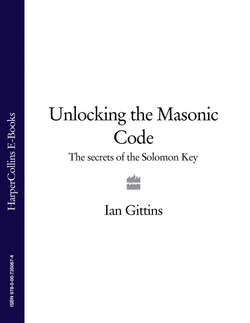Читать книгу Unlocking the Masonic Code: The Secrets of the Solomon Key - Ian Gittins - Страница 26
Catholicism vs Freemasonry Today
ОглавлениеFreemasons hoped that the Roman Catholic Church’s position on Masonry had softened towards the end of the twentieth century. The Church’s 1917 Code of Canon Law had declared Masonic membership punishable by automatic excommunication, but when this major doctrinal document was revised in 1983, Freemasonry had vanished from the list of prohibited ‘secret societies’. However, later in the same year the current Pope Benedict XVI, who was then a senior Church functionary, made it known that Masons remain ‘in a state of grave sin’ and are barred from taking communion. There appears little prospect of change as long as Benedict XVI is in charge at the Vatican.
members to even speak of religion during Masonic meetings.
The Antients vs Moderns schism that had ripped Masonry asunder for sixty years was resolved in 1813, when the two factions joined forces to form the United Grand Lodge of England (UGLE). This new body thus became the main legislative and administrative authority for English Masonry, but declined to impose standardized wording on all rituals and ceremonies, instead leaving individual lodges scope to shape their own vows.
The UGLE agreement, however, included a classic fudge caused by a major divergence in Masonic thinking across the world. The Modern school, represented by the original Grand Lodge of England, felt that the established three degrees of Masonry—Entered Apprentice, Fellow of the Craft and Master Mason—were all that were needed. The Antients held the opinion that another piece was required to complete the puzzle.
Feeling that the Master Mason degree as it stood did not complete the tale it purported to tell (namely, the murder of Hiram Abiff—see Chapter 3: Inside The Lodge: Masonic Rituals and Symbols), the Antients conceived an additional degree, the Holy Royal Arch—indeed, there is categorical evidence that at very early Masonic meetings, this ceremony formed part of the basic Master Mason degree. Loath to tamper with the long-established three degrees but keen to get the Antients on board, the UGLE resolved the dispute by means of a carefully worded compromise:
‘Pure Ancient Masonry is to consist of three degrees, and no more; viz, those of the Entered Apprentice, the Fellowcraft, and the Master Mason including the Supreme Order of the Holy Royal Arch.’
This deliberately convoluted phrasing opened the way for UGLE-affiliated English lodges to practise the York Rite, should they be so minded (see page 199). Along with the Scottish Rite, this series of elaborate rituals allows Freemasons to collect appendant degrees after they have qualified as a Master Mason (see Chapter 3).
